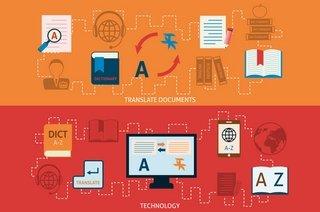Translation Technology and Software
Translation services market is extremely competitive nowadays, each vendor has to face generally the same problems: 1) keeping their rates attractive to the end customers, 2) maintaining high quality of the services, 3) maximizing efficiency of the overall business workflow, allowing to meet the criteria 1) and 2).

As an internal competitive advantage, HQ-translate s.r.o. in 2012 has implemented a highly customized version of one of the leading commercial CRM system integrating all standard administrative functions (Accounting, Planning, HR, Controlling) together with translation management components allowing our staff to have total and real-time control over company performance and progress of translation projects. This software utilizes Cloud Technology and supports staff and client access from virtually any place of the globe connected to the Internet. The intelligent automation of HQ-translate business processes through mentioned CRM system has noticeably shortened our project lead times and resulted in overall significant and sustainable increase in productivity and customer satisfaction.
Computer-aided translation software, or CAT tools, are PC applications that automate routine translation operations. By automating routine operations, CAT applications help to avoid re-translation and re-typing of identical or very similar translation segments - thus, reducing translator's time and efforts. And, as a result - reducing total costs for the end customer. All translations in certain language pair of the same trade/client can be stored as a bilingual file, so-called translation memory (TM). With each next translation order such TM is going broader and broader, thus, increasing probability of matches within texts that are next to translate. Translation costs are being reduced again. Besides, translation memory and CAT tools are, essentially, the only way to ensure translation consistency throughout large translation projects.
Here at HQ-translate s.r.o. we use a number of widely-spread commercial CAT tools, namely, SDL Trados Studio, Memsource, MemoQ.
Another important issue to deal with - is to make a quantitative evaluation of the translation quality, ensuring the content is error-free. To resolve this, Quality Assurance (QA) methodology has been developed and commercially available programs have been added into the order processing cycle. This software runs through translation and formally compares the details of layout of source and target files. Thus, it ensures that each small fragment of the translation is analyzed and the errors (dots, commas, number of words, not translated parts, etc.) are identified. The errors are then categorized by severity and type, and a translation quality score is calculated. Further, QA expert or editor goes through the list of potential errors and whether approves suggested modifications or skips them and moves further down the list.
This quality process is performed in addition to the human editing, proofreading, and other human checks that are in place per standard project requirements. The automated quality control tools available at HQ-translate are Verifika and ApSIC Xbench.







